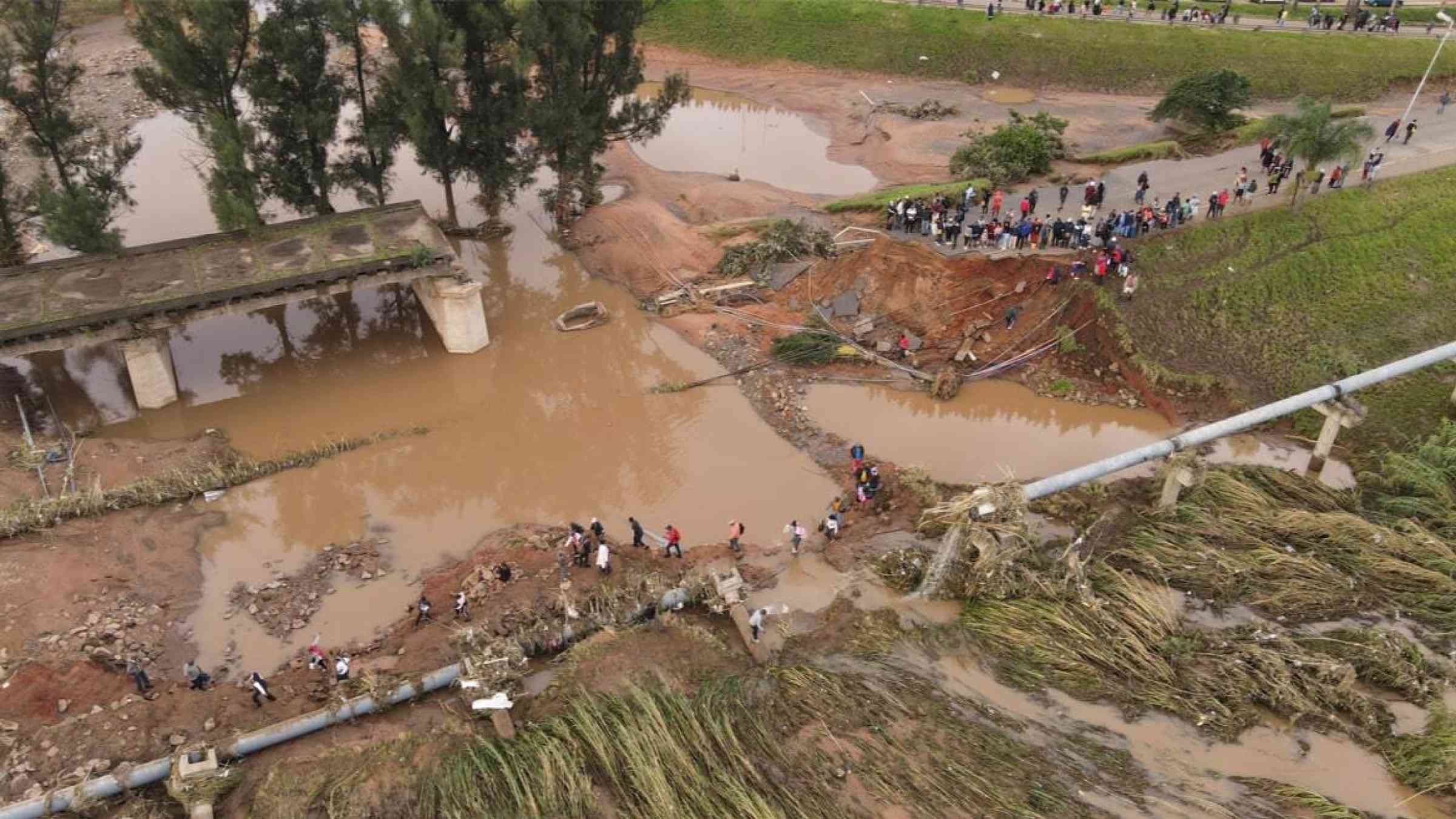Local knowledge adds value to mapping flood risk in South Africa’s informal settlements

The current flooding in South Africa’s coastal city of Durban is dire and reports indicate that hundreds of people have died and thousands directly affected. Several months’ worth of rainfall have fallen in a day or so, and the effects have been catastrophic.
The problem of floods in Durban is not new. Between 1980 and 2010, there were over 77 disastrous flood events in KwaZulu-Natal province and others. The flood events can be categorised as disastrous when lives are lost, people are displaced and property is destroyed.
Floods have over the years become increasingly problematic, especially in the global south, because of high population density, land-use change, increased impervious surfaces, poor solid waste management and settlement of people in flood plains and wetlands. The advent of climate change has also led to an increase in the intensity and frequency of rainfall and flooding in many cities.
Flooding is arguably even more problematic in informal settlements because of the lack of planning. Historically, the apartheid regime legally compelled people classified as black Africans to live in marginalised settlements and restricted their movements. Because housing wasn’t planned or provided, informal settlements emerged.
Rural-urban migration has also contributed to the increase of informal settlements in South Africa. There were 1,176 informal settlements in 2004. By May 2020, there were well over 3,200 such settlememts.
Floods usually destroy infrastructure, houses and property, cause displacements and loss of life, and pose risks to the health and livelihoods of people. This, in turn, increases poverty.
Since floods are not usually predicted well in advance in South Africa, resources meant for other important city services such as healthcare and sanitation tend to be channelled to provide relief to flood victims as well as rescue operations. This in turn affects overall service provision and development in the city.
There is therefore a need to look at the complex problem of floods in South Africa from a more holistic and context-specific angle, particularly by integrating local people’s indigenous knowledge.
As part of our research we conducted a critical literature review to see how flood vulnerability was understood in South Africa. We found that the use of indigenous knowledge and geographical information systems in mapping flood vulnerability was highly fragmented.
There is limited use of indigenous knowledge and inadequate community participation in the mapping of flood vulnerability in informal settlements. We showed that, in the context of informal settlements, the “picture” of places where floods could cause disaster would be more detailed and complete if local communities were consulted and their knowledge was integrated.
Why local knowledge makes a difference
A geographical information system creates, analyses and maps all types of data. This includes data on floods and areas vulnerable to flooding. It can be drawn on when engaging stakeholders and educating the public about how human and environmental systems interact. But a geographical information system on its own is not able to explain the human factors that cause flood vulnerability.
Hence the need for local or indigenous knowledge.
Indigenous knowledge is strongly linked to local culture and past experiences, and therefore it can be a source of resilience to flooding and other natural disasters.
South Africa’s laws and regulations make provision for using indigenous knowledge in reducing flood disaster. But the use of this approach is still relatively low. In many cases it is nonexistent, especially in urban areas.
Precarious living
As in other sub-Saharan cities, the poorer communities in Durban mainly live in informal settlements. This is because the local planning authorities are unable to keep up with the increasing demand for accommodation as people move to the city. According to city reports, between 2016 and 2019, the local authority managed to build only an average of 4,000 houses a year. This means the city has a backlog of more than 440,000 houses. It could take decades to clear.
The informal settlements are unfortunately often located in environmentally fragile areas like steep slopes, wetlands and flood plains. This is land that is available precisely because it is unsuitable for building.
People living in these informal settlements are adversely affected by floods because their homes have poor drainage infrastructure and are built with poor materials. The residents also arguably have low coping and adaptive capacity. They tend not to receive flood early warning information in time and in ways that would be helpful.
This points to the need for bottom-up approaches in dealing with potential flood disaster management in informal settlement areas. Knowledge based on familiarity with the place offers a number of advantages:
- it provides a culturally appropriate response
- is socially inclusive
- is cost-effective
- is a participatory way of reducing flood vulnerability, especially in informal settlements
- promotes community members’ participation in finding solutions that work where they live
- provides city planners with information on the spatial pattern as well as locally specific factors that cause flooding and damage in particular geographical areas.
Next steps
Mapping or spatially visualising the patterns with the use of geographic information systems and levels of flood vulnerability can identify the people who need the most help. This can assist local government and other stakeholders to formulate policies and strategies that reduce the impact of floods on people.
Unfortunately the reality is that flooding will increase in many parts of the world due to climate change. There is thus a need for stakeholders at various levels to come up with ways of reducing people’s vulnerability. Increasing people’s coping and adaptive capacity is one of the key ways of promoting resilience.
The mapping of floods by integrating the indigenous knowledge of local communities is an approach that potentially has much to offer flood disaster management.
![]()